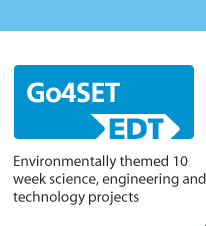Trends and Predictions for the Industry of STEM
I. Introduction
STEM, which stands for Science, Technology, Engineering, and Mathematics, is a term that refers to a group of academic disciplines that are closely related and have a major impact on our daily lives. If you're a student struggling with outlining your writing assignments related to STEM, consider using an outline writing service at https://exclusive-paper.net/do-my-outline-for-me to help you organize your thoughts and ideas.
The fields of STEM are important because they provide the knowledge and tools that are needed to understand and solve complex problems in society, such as climate change, healthcare, and energy.
This article aims to provide a detailed overview of the future of STEM by examining the current state of the industry, exploring emerging trends, discussing job opportunities, and addressing challenges and opportunities in the field.
II. Current State of STEM
STEM is a constantly evolving field that is constantly changing due to technological advancements. At present, some of the current trends and developments in STEM include robotics, nanotechnology, big data, and artificial intelligence (AI). These emerging trends have led to new opportunities and challenges in the field. For example, the increased use of big data has led to the creation of new tools and methods for analyzing data, while also raising concerns about data privacy and security.
III. Trends in STEM for the Future
The future of STEM is exciting, with new and emerging trends that are likely to shape the industry in the coming years. One of the most significant trends is the increased use of AI, which has already had a major impact on fields such as healthcare, transportation, and education. Other emerging trends include the use of blockchain technology, the Internet of Things (IoT), and the increased focus on renewable energy sources.
IV. Jobs and Careers in STEM
There are a wide variety of jobs and careers in STEM, ranging from research scientists and engineers to computer programmers and data analysts. In order to succeed in these fields, individuals typically need to have a strong educational background in STEM subjects, as well as skills such as problem-solving, critical thinking, and creativity. While there are many job opportunities in STEM currently, the future job market in this field is likely to be even more competitive, with a growing demand for workers who can innovate and adapt to new technologies.
V. Diversity and Inclusion in STEM
Diversity and inclusion are important issues in STEM, as they play a critical role in shaping the future of the industry. Currently, there is a lack of diversity in many STEM fields, particularly among women and underrepresented minority groups. Efforts are being made to address this issue, with initiatives such as mentorship programs and diversity training programs. In the future, diversity and inclusion are likely to play an even greater role in shaping the industry, as a more diverse workforce will bring new perspectives and ideas to the table.
VI. Challenges and Opportunities in STEM
There are several challenges facing the STEM industry, including funding, education, and a shortage of talented workers. However, there are also many opportunities for growth and innovation in STEM, particularly in fields such as renewable energy and biotechnology. Policymakers and business leaders will play a critical role in addressing these challenges and creating opportunities for growth in the field.
VII. Conclusion
In conclusion, the future of STEM is bright, with many exciting developments and opportunities on the horizon. By staying up-to-date on emerging trends and technologies, individuals can position themselves for success in this field. It is important to remember that diversity and inclusion are key to the future of STEM, and efforts should be made to create a more inclusive and diverse workforce. By working together, we can create a future for STEM that is both innovative and inclusive.
Additional Resources:
- Khan Academy STEM Courses
- STEMconnector
- National Science Foundation
- IEEE Spectrum
- MIT Technology Review
|





